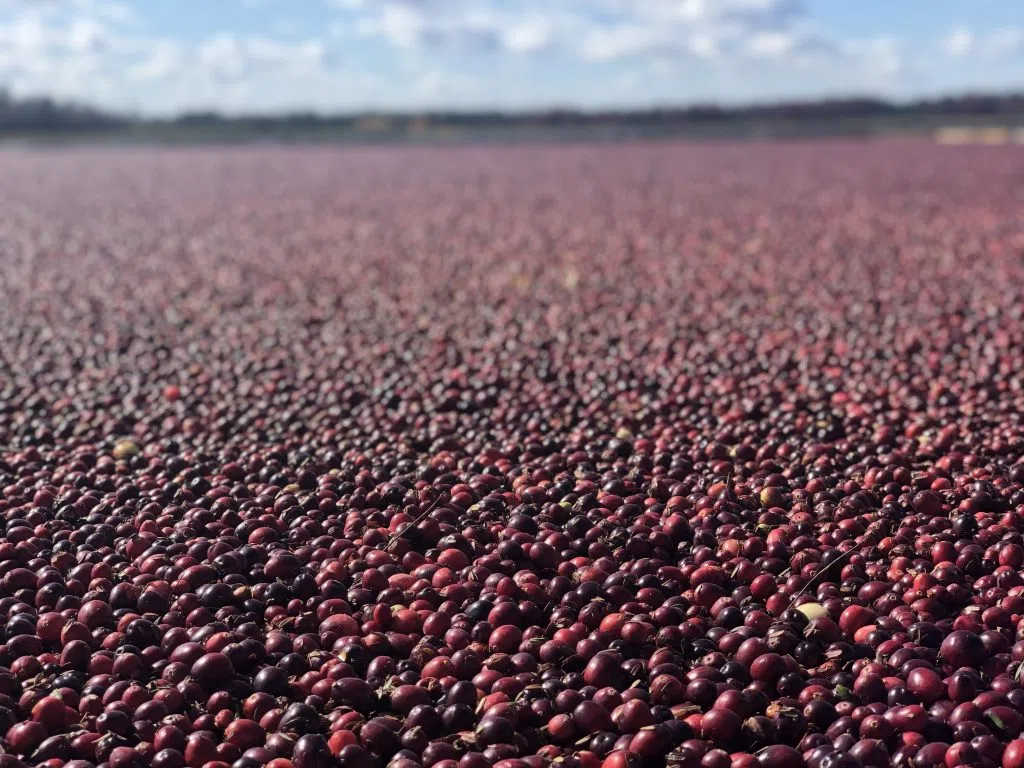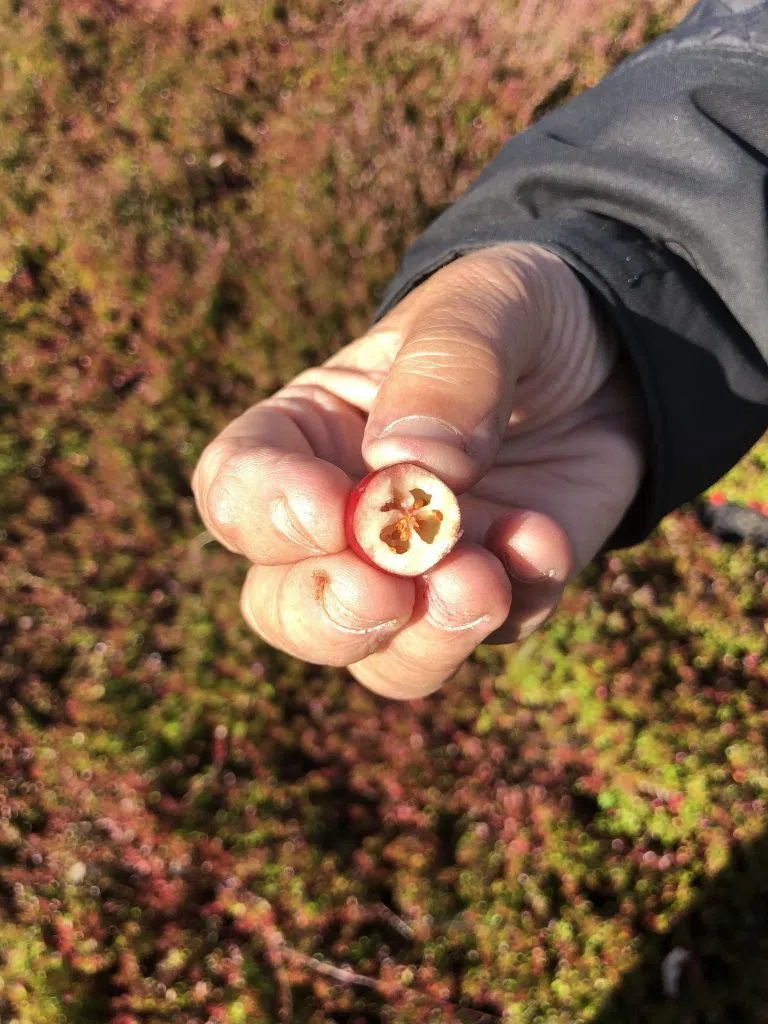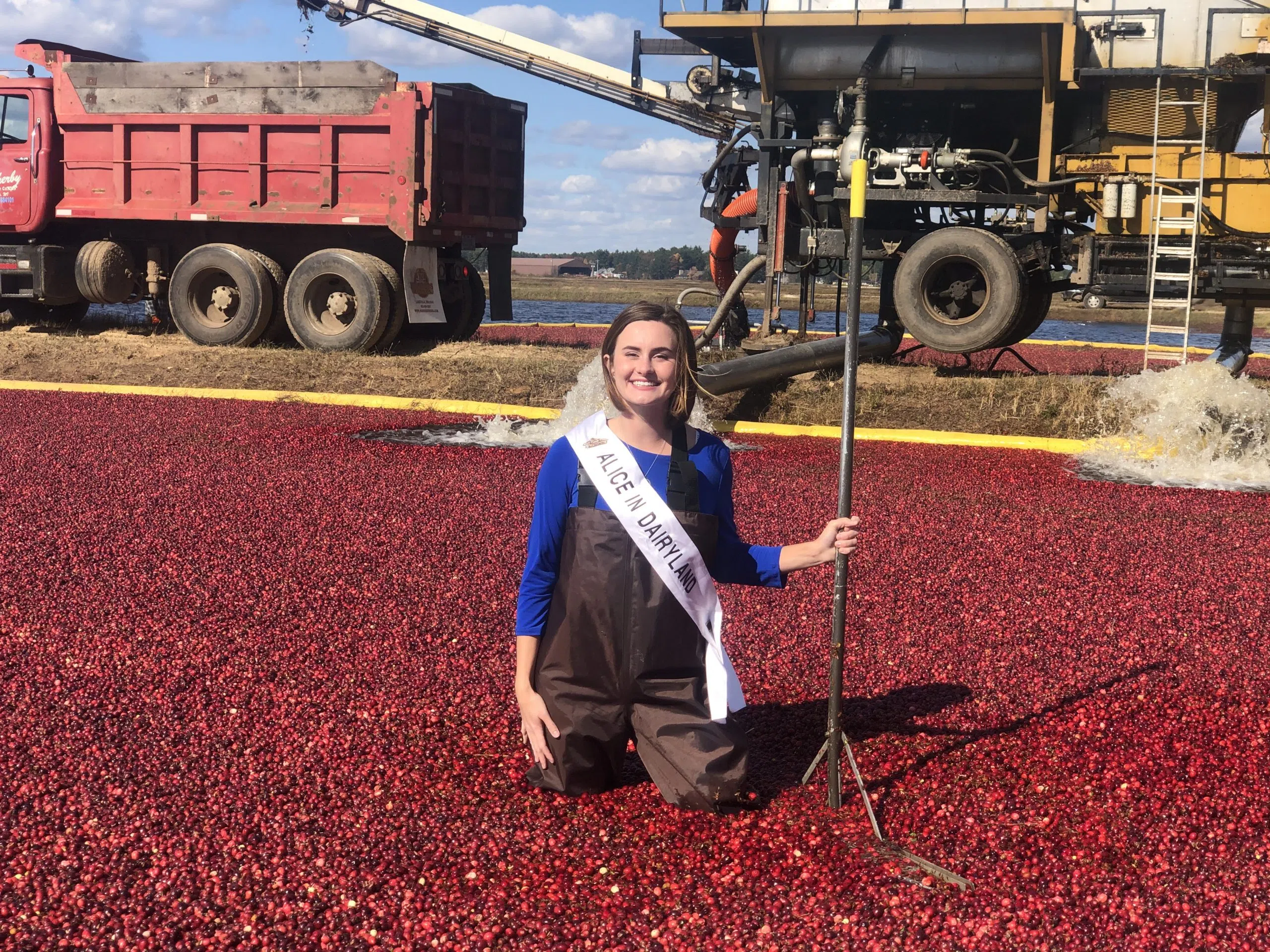If you’ve driven next to a field within the past couple of weeks, you’ve most likely noticed that fall harvest season’s in full swing in Wisconsin. Not only are farmers busy harvesting corn and soybeans, but in the central and some of the northern parts of the state they’re also harvesting cranberries.
Julia Nunes, the 74th Alice in Dairyland stopped by prior to hanging out at the 2021 Warrens Cranberry Festival this weekend to share some facts about cranberry harvest.

- Cranberries grow on vines in sandy soil, hence why the central part of the state’s so good for them.
- Unknown to many, cranberries do not grow in water, they’re in a field similar to most other crops, but it’s a little more indented into the ground. The field (bog) is flooded only during harvest.
- The berries are perennial, meaning they come back each year without replanting.
- To protect the vines from our harsh winters, farmers will flood the bogs, wait for the top to freeze, and then drain the water away. They’ll do this until there are about three to four inches of ice covering the top of the field with no water underneath in order to create a greenhouse effect.

- Cranberries have four compartments so they can float. This is why once the bog’s flooded, the farmer uses equipment similar to a hay rake to get the berries off of the vines so they float to the top making them easier to harvest. (Just like in the Ocean Spray commercials.)
- For the past 27 years, Wisconsin has led the nation in cranberry production.
- The dairy state alone provides over half of the world’s demand for the berry.
If you’d like to meet Alice in Dairyland or learn more about cranberry harvest in Wisconsin, she’ll be out at the Warrens Cranberry Festival, which kicks off September 24th and runs through the 26th in Warrens, WI.
You can hear the whole conversation with Alice in Dairyland on our podcast page. We talked about what she was up to over the summer months, what’s happening now, and what’s to come.






